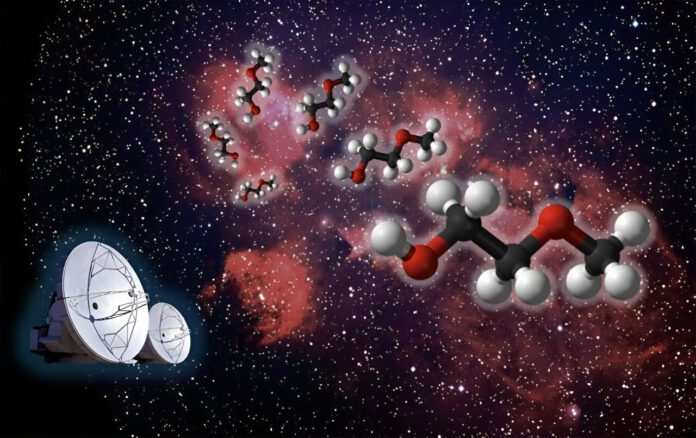
Scientific researchers from America have uncovered a novel molecule in space, dubbed 2-methoxyethanol. The effort required substantial resources, compiling data from France’s Lille and receiving assistance from both Copenhagen and Florida.
A Quest for Understanding Space
Researcher Zachary Fried from the renowned Massachusetts Institute of Technology (MIT), explains, “Our team aims to grasp which molecules are present in the areas of space where stars and galaxies eventually form. We are attempting to determine how chemistry evolves during the star and planet formation process. We do this by examining the rotation spectra of molecules – the unique light patterns they give off as they tumble through space.”
“These patterns are the fingerprints or barcodes of molecules. To discover new molecules, we first need to have an idea of the molecule we want to search for, then we can record its spectrum in an earth-based lab, and eventually, we use telescopes to search for that spectrum in space,” he continues.
The Complexity of the Task
Recently, the researchers have begun to utilize machine learning to select the most promising molecules to search for. Last year, an AI model suggested targeting 2-methoxyethanol. “There are a number of ‘methoxy’ molecules in space, like dimethyl ether, methoxymethanol, ethylmethyl ether, and methyl formate, but 2-methoxyethanol would be the largest and most complicated molecule we’ve ever observed,” states the scientist.
But the process isn’t as straightforward as the computer model proposes. The researchers first needed to measure and analyse the rotation spectrum of the molecule on Earth. For this, they amalgamated experiments from the University of Lille, the New College of Florida, and the MIT’s own McGuire Lab. This allowed them to measure the spectrum across a broadband of frequencies, ranging from 8 to 500 gigahertz, from microwaves to submillimeter wavelengths.
A Match
The data garnered from these measurements was then utilized to genuinely search for the molecule in two separate star-forming regions: NGC 6334I and IRAS 16293-2422B, using the Atacama Large Millimeter/submillimeter Array (ALMA). These telescope observations then had to be explored by three separate research groups.
“Eventually, we saw 25 rotation lines of 2-methoxyethanol that aligned with the molecular signal we observed in NGC 63341 – the barcode matched – which led to a clear detection of methoxyethanol in this source,” reveals Fried. “As a result, we could decipher the physical parameters of the molecule, such as its prevalence and excitation temperature.”
Such discoveries of new molecules help the researchers to better understand the development of molecular complexity during the star formation process in space. 2-methoxyethanol, composed of thirteen atoms, is quite large by interstellar standards. Until 2021, only six molecules larger than thirteen atoms have been discovered outside of our Solar System, and all of them were ring-shaped structures, whereas the newly discovered one is elongated.
“Continuous observations of large molecules and the subsequent conclusions about their presence enable us to enlarge our understanding of how efficiently large molecules can form and the specific reactions by which they are produced,” says Fried.
“And since we found this molecule in NGC 6334I but not in IRAS 16293-2422B, we had the unique opportunity to observe how the different physical conditions of these two sources affect the ensuing chemistry.”











